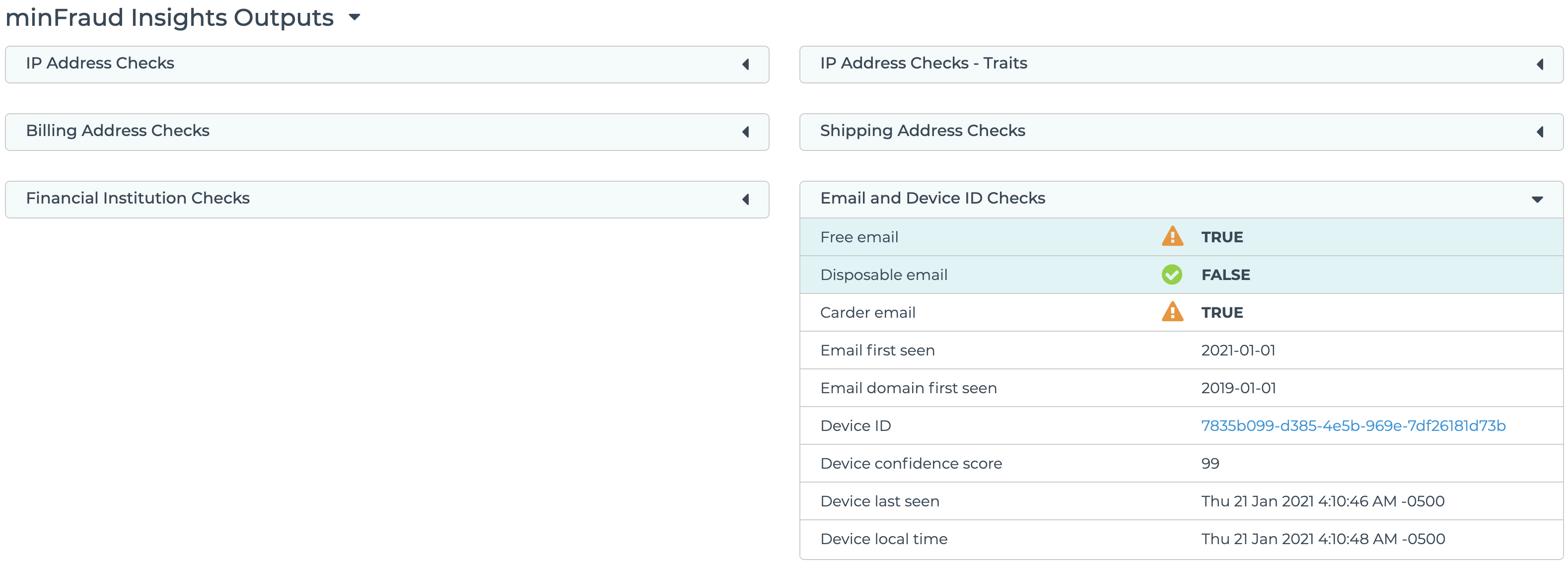Email risk data
Email risk data includes:
- whether the email has a reputation for high risk on the minFraud network,
- how long ago the email address was first seen on the minFraud network,
- and flags to indicate whether an email address is disposable or free.
These data points will only be returned when you pass the email address as an input to the minFraud Insights and Factors web services. Learn more about passing inputs to minFraud.
Email reputation flagging
If an email address engages in risky activity anywhere across the minFraud Network, we flag it as a high risk email address.

High risk email flagging is displayed as "Carder email" under Email and Device ID Checks in the transaction review screen in the account portal. Learn how to review transactions using the account portal.
You can read the API specifications for high risk email flagging on our developer portal:
Email first seen
The minFraud service retains a record of when an email address was first seen on the minFraud Network. The minFraud services have been recording when an email address was first seen since 2008.
An email address that has been conducting transactions for a long time across the minFraud Network may be more trustworthy than a new email address. If the email has been around longer, this may also mean that our assessment of whether the email is a high risk email address is more accurate.

When the email was first seen on the minFraud Network is displayed under Email and Device ID Checks in the transaction review screen in the account portal. Learn how to review transactions using the account portal.
You can read the API specifications for email and domain tenure tracking on our developer portal:
Free and disposable email detection
We flag free and disposable email domains. Use of free email providers (e.g. Gmail, Yahoo, Outlook, etc.) by consumers is the norm, so this data point is often useful only in business-to-business contexts where you expect transactions to be conducted using a business email domain.
Disposable or temporary email addresses are sometimes used for privacy or to prevent spam, but they can also be used by fraudsters to avoid detection, because there is no history of use to draw from to inform risk scoring.

Free and disposable email detection is displayed under Email and Device ID Checks in the transaction review screen in the account portal. Learn how to review transactions using the account portal.
You can read the API specifications for free and disposable email flagging on our developer portal: